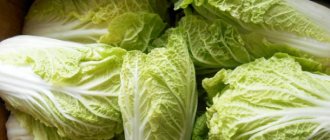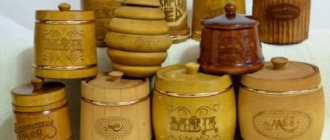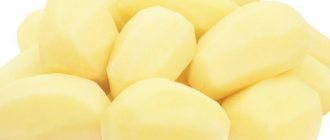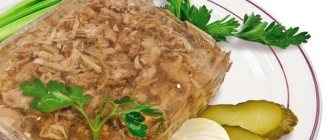When it is not possible to buy fresh cow's milk every day, there is a solution: you can use a powder product. In dry form, this product will remain fresh much longer than on tap, without souring or changing its taste. This product can be used as an additive to various dishes and drinks. Coffee is brewed on it and drunk, dissolved in water in accordance with the proportions. But even powder products must be in the conditions established by GOST. Therefore, we will talk further about how to store milk powder.
There is a wide range of varieties of powdered dairy products. Nowadays, not only whole milk powder is produced, but also skim milk. As well as various types of dry milk formulas, buttermilk and whey-based dry products.
When powdered milk is stored incorrectly, in conditions of too high humidity or temperature, the product quickly loses its nutritional value. Even if its consistency, color and smell are preserved, it will be just a light powdery composition, which does not contain the beneficial substances that were originally in it.
What types of powder are there?
Dried milk comes in whole and skim varieties, and the finished product obtained by dissolving the powder in water is called “reconstituted.”
To lose weight, it is advisable to buy the second type of powder (since it no longer needs to be degreased), which retains all the vitamins, minerals and amino acids. If you need to build muscle mass, then use whole powder, which has a high calorie content and a higher protein content. It is important to monitor the shelf life of powdered milk, since it is strongly not recommended to use an expired product.
How long can dry powders be stored?
Many housewives prefer to use milk powder, and all because of the durability and ease of storage. You can take dried milk with you on a hike or travel and not be afraid that it will spoil, because you can open the package at any time and prepare a fresh product.
However, even dry milk powders have storage restrictions, failure to comply with which leads to a deterioration in taste and a decrease in the nutritional value of the finished drink.
What is the shelf life of milk powder when opened at home? This period depends on the type of powder. Whole dried milk product is stored much less than skim milk product because it has fat, which gradually becomes bitter.
It is strictly forbidden to keep good powder in the heat, as it will quickly deteriorate. If you keep dried milk at +20 °C (room temperature), it can be stored for 3 months, and if it is opened, you need to consume the product within 30 days. The powder diluted in water can be refrigerated for up to 72 hours.
To extend the shelf life of whole dairy products, after opening the package, pour the contents into airtight paper or glass containers and place them on the refrigerator shelf. Under this condition, the shelf life of whole milk powder after opening will be 7-8 months, and skim milk – 1 year.
Powdered milk is a dairy product made from natural pasteurized milk by condensing it and drying it in special drying devices. The method is quite gentle and preserves almost all the beneficial properties of the dairy product. Dried milk is widely used in the field of cooking and agriculture for feeding newborn livestock.
Description of technical requirements
When producing dry skim milk powders, technological instructions, sanitary norms and rules approved in this state standard must be strictly observed.
GOST is divided into spray (obtained by drying in a spray drying unit) and film (to dry milk substances, a roller drying unit is used). The following types of raw materials can be used in production:
- cow's milk grade 2 and higher;
- low-fat dairy products, the acidity of which does not exceed 21 °T;
- Buttermilk obtained during the butter production process.
The current GOST establishes requirements for the taste of milk powder. Thus, spray powders should taste like fresh pasteurized skim milk, and film mixtures should taste like a pasteurized skim milk product.
In terms of consistency, the spray product should be supplied in the form of a dry powder, and the film product should be supplied in the form of a crushed film. The technical conditions of whole milk powder allow for the presence of a small amount of lumps, which should easily crumble when compressed. As for color, the powders should have a white color with creamy shades.
Established physical and chemical parameters of spray and film mixtures:
- fat content: up to 1.5%;
- protein content: from 32%;
- lactose content: from 50%;
- acidity: up to 20 °T;
- tin content: up to 0.01%;
- copper content: up to 0.0008%.
Microbiological parameters of milk powder:
- mesophilic aerobic and facultative anaerobic microorganisms: up to 50,000 units per 1 gram;
- the presence of pathogenic microorganisms (including salmonella) and E. coli bacteria are strictly not allowed in the composition.
5.1 Characteristics
5.1.1 The product is manufactured in accordance with the requirements of this standard, according to technological instructions approved in the prescribed manner, in compliance with the requirements established by regulatory legal acts of the Russian Federation.
5.1.2 In terms of organoleptic characteristics, the product must meet the requirements of Table 1. Table 1
| Indicator name | Characteristic |
| Appearance and consistency | A fine powder or powder consisting of single and agglomerated particles of milk powder. A small number of lumps are allowed, crumbling under slight mechanical stress. |
| Color | White, white with light cream tint |
| Taste and smell | Characteristic of pasteurized skim or whole milk without foreign tastes and odors. The taste and smell of boiled milk is allowed |
5.1.3 In terms of physical and chemical indicators, the product must comply with the standards specified in Table 2. Table 2
| Indicator name | Standard for the product | |
| low fat | whole | |
| Mass fraction of moisture, %, no more, for a product packaged: | ||
| – in consumer packaging | 4,0 | 4,0 |
| – in a transport container | 5,0 | 4,0 |
| Mass fraction of fat, % | No more than 1.5 | Not less than 26.0 |
| Mass fraction of protein in dry skimmed milk residue, %, not less | 34,0 | |
| Solubility index, cm wet sediment, no more, for product packaged: | ||
| – in consumer packaging | 0,2 | 0,1 |
| – in a transport container | 0,2 | 0,2 |
| Cleanliness group, not lower | I | |
| Acidity, °T (% lactic acid) | From 14 to 21 incl. (0.126 to 0.189 inclusive) | |
| Mass fraction of milk sugar (lactose), % | From 47.0 to 54.0 incl. | From 36.0 to 40.0 incl. |
(Changed edition, Amendment No. 1).
5.1.4 The content of toxic elements, mycotoxins, antibiotics, pesticides and radionuclides in the product should not exceed the standards established by regulatory legal acts of the Russian Federation*.______________* Until the introduction of the relevant regulatory legal acts of the Russian Federation - regulatory documents of federal executive authorities [2] and [3].
5.1.5 Microbiological indicators of the product must not exceed the standards established by regulatory legal acts of the Russian Federation*.______________* Until the introduction of the relevant regulatory legal acts of the Russian Federation - regulatory documents of federal executive authorities [3].
5.2 Requirements for raw materials
5.2.1 For the manufacture of the product, the following raw materials are used: - raw cow's milk in accordance with GOST R 52054, not lower than second grade, without feed taste and odor, with an acidity of no more than 18 ° T; - skim milk - raw material in accordance with GOST R 53503; - condensed milk - raw material according to GOST R 53948; - cream – raw material according to GOST R 53435.
It is allowed to use the antioxidant dihydroquercetin with a mass fraction of pure dihydroquercetin of at least 90% in the production of whole milk powder according to the document in accordance with which it is manufactured and can be identified. The maximum level of pure dihydroquercetin in the product is 200 mg/kg of product fat. The raw materials used for the manufacture of the product must meet the safety requirements [1].
5.2.2 It is allowed to use imported raw materials that are not inferior in quality to the requirements listed in 5.2.1 and that comply with the safety standards established by the regulatory legal acts of the Russian Federation*.______________* Before the introduction of the relevant regulatory legal acts of the Russian Federation - federal regulatory documents executive authorities [2] and [3].
5.2.1, 5.2.2 (Changed edition, Amendment No. 1).
5.3 Marking
5.3.1 Labeling of consumer packaging is carried out in accordance with the requirements [1].
5.3.2 The marking of the transport container in which the product is directly packaged must contain the following information: - name of the product; - mass fraction of fat in percent; - name and location of the manufacturer (address, including the country and/or place of origin of the product) and organization in the Russian Federation, authorized by the manufacturer to accept claims from consumers on the territory of the Russian Federation (if these claims exist);
- manufacturer’s trademark (if there is a trademark); - net and gross weight; - batch number; - product composition; - nutritional and energy value; - information on the presence of components obtained using genetically modified organisms (if they are present in quantity more than 0.9%);
5.3.3 Labeling of group packaging and transport containers in which the product is packaged in consumer packaging must comply with the requirements [1].
5.3.4 Transport marking - in accordance with GOST R 51474, GOST 14192 with the application of handling marks, taking into account the type of packaging, conditions and expiration dates.
5.3.1-5.3.4 (Changed edition, Amendment No. 1).
5.3.5 The marking of the transport package must contain the following information: - name of the product; - name and location of the manufacturer (legal address, including country, and, if it does not coincide with the legal address, production address) and the organization in the Russian Federation authorized by the manufacturer to accept claims from consumers on its territory (if any);
- storage conditions; - date of manufacture; - expiration date; - gross weight; - number of units of transport containers or group packaging; - designation of this standard. If the marking on the consumer container, transport container and group packaging is clearly visible during banding, it is allowed Do not apply markings to the side (end) surfaces of the transport package.
We invite you to familiarize yourself with: Terms and procedure for obtaining a license for the right to purchase smooth-bore weapons
5.3.6 Information data is indicated in Russian and additionally, if necessary, in the state languages of the constituent entities of the Russian Federation, native languages of the peoples of the Russian Federation, as well as foreign languages.
5.3.7 Products sent to the Far North and equivalent areas are labeled according to GOST 15846.
5.4 Packaging
5.4.1 Packaging materials, consumer and transport containers used to package the product must comply with the requirements of the documents in accordance with which they are manufactured, be approved for use in the prescribed manner and must ensure the preservation of the quality and safety of the product during its transportation, storage and sale .
5.4.2 The product is packaged in consumer or transport containers, or in consumer containers with subsequent placement in transport containers.
5.4.3 The formation of group packaging is carried out in accordance with GOST 25776.
5.4.4 Transport packages are formed in accordance with GOST 23285 and GOST 26663.
5.4.5 The transport package is laid out in such a way that the markings of at least one unit of the group package and/or transport container are visible on each side of the transport package. The transport package is laid in ways that ensure the safety of the bottom rows of the group package and/or transport container without them deformation.
5.4.6 Product sent to the Far North and equivalent areas is packaged in accordance with GOST 15846.
5.4.7 Limits of permissible negative deviations of net weight from nominal net weight - according to GOST 8.579.
Manufacturing
Industrial production of milk powder began in the second half of the 19th century. For its production, special spray dryers were invented, through which already pasteurized condensed cow raw materials were passed at +150°C...+180°C. The result was milk powder with its own nutritional value and a relatively long shelf life.
Important! Powdered milk is produced in accordance with GOST 4495-87 “Whole milk powder” and GOST R 52791-2007 “Canned milk. Powdered milk. Technical conditions".
Kinds
Whole milk powder (commonly referred to as SCM) is more nutritious due to the large amount of fat it contains, which is why the shelf life of the product is shorter. The energy value of this species reaches 550 kcal per 100 g.
Skimmed milk powder (SMP) contains virtually no fat. Its shelf life reaches 8 months if stored properly. Calorie content is reduced to 373 kcal per 100 g.
Instant milk powder is a mixture of whole and skim milk powder that has been moistened and re-dried during the manufacturing process. This ingredient is often used in the manufacture of infant formula and other instant foods.
How to determine the freshness of kefir and fermented baked milk
Fresh kefir has a uniform consistency. Due to mixed (lactic acid and alcohol) fermentation and special fermentation with kefir grains, gas formation is possible. Natalya Klimova notes that slight swelling of the kefir package is normal.
But for ryazhenka, on the contrary, this is a sign of damage. The product is produced by fermenting baked milk with the addition of special starter cultures. Fresh fermented baked milk is absolutely homogeneous, soft creamy in color and with a pleasant melted aftertaste.
The main sign of spoilage of fermented milk products is the appearance of watery whey on top.
Compound
Currently, whole, skim and instant milk powder is produced.
Each of them differs from each other in the percentage of proteins, fats and carbohydrates. One thing remains the same - the content of vitamins, minerals and amino acids. So, the ready-to-use product contains:
- vitamins: A, B1, B2, B9, B12, D, choline, vitamins PP, E, C.
- microelements (per 100 g of milk powder): calcium - 1000 mg, sodium - 400 mg, potassium -1200 mg and phosphorus - 780 mg.
Benefit
The benefits of powdered milk are usually discussed in terms of its comparison with natural cow's milk. And in this case, of course, the benefit is obvious:
- For residents of the northern regions, a long shelf life of the product is important while maintaining the same nutritional value and health benefits as regular cow's milk.
- Powdered milk is heat treated during the manufacturing process and is therefore safer to consume than fresh cow's milk.
- Regular consumption of powdered milk in dissolved form helps fight anemia and rickets. Strengthens bone tissue due to the high content of calcium and vitamin D, and B vitamins will help restore the nervous system. A well-prepared drink also affects the health of the cardiovascular system and has a positive effect on vision.
Harm
It would seem: what could be harmful in powdered milk? But even here you can find several pitfalls that few consumers think about.
- First: powdered milk can be a strong allergen. It is dangerous for people suffering from lactose intolerance or a secondary form of allergy to dairy products. In this case, any allergic reactions are possible - from mild malaise and flatulence to swelling and anaphylactic shock.
- Second: a lot depends on the integrity of the product’s manufacturers. Very often you can find both animal and vegetable fats in its composition. Thus, the manufacturer reduces the cost of its product due to its quality and nutritional value.
How to tell if milk powder contains palm oil
Palm oil is added to dairy products for reasons of economy: it is several times cheaper than milk fats, so it is profitable for manufacturers to use it. Products containing palm oil are usually less digestible and contain fewer vitamins and amino acids than milk. On the label, palm oil is bashfully hidden behind the designation “vegetable fat.” This milk is always noticeably cheaper than others.
Carbohydrates: 52.6g. (∼210.4 kcal)
Energy ratio (b|w|y): 39% | 2% | 62%
Powdered milk - powder (see.
photo), which is obtained by drying cow's milk. It was invented so that people could take this product with them on long trips and be able to enjoy it at any time, which is why it received a lot of positive reviews. This product has a caramel flavor.
The production of milk powder takes place in 2 stages: first, the milk is condensed and then dried. As a result, the product loses 85% of its volume. It is packaged in packages using inert gases, which ensures a longer shelf life.
Powdered milk contains a large amount of fat. Considering this, it is used in the recipe for making chocolate, as well as for making some candies. In general, this product is quite widely used in the food industry, as it is included in cereals, baby food, confectionery, condensed milk, yogurt, etc.
How did the first powdered milk appear and where did it begin to be produced on an industrial scale?
The peoples of Siberia, Kazakhstan, Yakutia, Tibet and Mongolia have been able to freeze milk for long-term storage for centuries. It was poured onto flat dishes and frozen, after which it was left in the cold under the sun. The moisture gradually evaporated, leaving a dense solid mass consisting of concentrated (or condensed - not to be confused with condensed milk!) milk. All that remained was to grind this mass into milk flour and use it as needed, diluting it with water. This is roughly what scientists today call “freeze-drying of food products” in a simplified form.
The translator from the Mongolian language I. Erich wrote about this interesting fact in 1792 in his article “Notice about natural milk flour” for the Free Economic Society. This flour had an “excellent sweet taste” and was convenient to store during a sea voyage or on a long journey across the steppe or mountains.
Even at the beginning of the 19th century, our ancestors knew how to dry milk using the heat method (it was also excellent for storing eggs for future use). In the “Technological Journal” of the Russian Academy of Sciences from 1808 they wrote that milk should be evaporated in a water bath in a clay jug with continuous stirring. When the liquid had completely evaporated, the residue was ground into powder and stored in a sealed container.
In the USA, they first discovered a method for producing condensed milk (the excess liquid was again evaporated, then the thick milk was canned). The discovery belongs to businessman-enthusiast G. Borden. He launched his first (in America, the world and history) condensed milk production plant in 1858. Condensed milk turned out to be an ideal raw material for producing powdered milk: it is still produced using this principle.
Industrial production of milk powder was established by 1916. During the First World War, this and many other similar discoveries came in handy.
By the second half of the 20th century, plant technologists around the world knew how to produce dry milk products for dietary, medical and baby food. The same methods are used today, adjusted for the improvement of technological equipment.
Selection and storage
When choosing powdered milk, pay attention to its composition: it should not contain vegetable fats or any preservatives, only whole cow's milk. The packaging must be intact and without damage.
Powdered milk has a long shelf life - 8 months from the date of production. Ideal storage conditions would be a temperature from 0 to 10 degrees, while the air humidity should be no more than 85%. If the product is low-fat, the shelf life increases to 3 years.
Composition of the product
What is this product made from that makes the shelf life of powdered milk according to GOST so long? The classic version includes only pasteurized whole cow's milk. This raw material undergoes a 5-stage complex procedure of drying and then homogenization, thus maintaining the original composition virtually unchanged.
The finished powder contains a large amount of fats, proteins, lactose, vitamins, nutrients and microelements. There are no additional components in the composition, for example, soy protein, starch, sugar. These products only worsen the taste and quality of milk powder.
How to check the quality?
To check the quality of purchased milk, you need to taste it.
If you feel any aftertaste or the taste does not resemble milk at all, it means that low-quality raw materials were used during the production of milk powder. Also, the taste of this product may be affected by improper transportation and storage conditions.
The quality of milk powder can be judged by the color of the product. The powder should be uniformly white with a slight creamy tint. The presence of yellow or brown inclusions indicates that errors were made during the manufacture of the product, which will significantly affect its quality.
Powdered milk should have a uniform consistency without any lumps, and if there are any, they can be easily crushed with your fingers.
A high-quality product should dissolve completely in water, leaving no sediment. If you did find it, it means that the raw materials were of poor quality.
Useful tips for breeding
Before diluting milk powder with water yourself at home, pay attention to a few useful tips:
- It is undesirable to use cold water for these purposes, since the particles will not dissolve completely, will begin to crystallize and will be strongly felt on the teeth.
- Boiling water is also not suitable for diluting powdered milk, since the product curdles in it.
- After dilution, the liquid must be allowed to stand for a while, since in this way you can achieve an optimal product, not watery and without lumps.
- It is best not to use a mixer for stirring as it creates a lot of foam in the drink.
- The dry powder is added to the water carefully and gradually.
- If you brew natural coffee at home and season it with diluted milk powder, you will get a very tasty drink.
Beneficial features
The benefits of powdered milk are due to its composition, which is not inferior to natural milk that has undergone pasteurization. This product contains calcium, which is necessary to strengthen bone tissue.
Powdered milk also contains potassium, which has a beneficial effect on the activity of the cardiovascular system. It contains quite a lot of vitamin A, which improves visual acuity and skin condition. Given the vitamin D content, milk powder is an anti-rickets agent.
This product contains choline, which helps normalize cholesterol levels in the blood. Thanks to chlorine, you can get rid of swelling and cleanse the body.
Powdered milk is used to reconstitute milk or a milk drink, which can then be used like natural milk. In addition, creams, baked goods and other products are prepared on its basis. As mentioned earlier, it is widely used in recipes for many confectionery products.
Benefits and harms
As mentioned earlier, the composition of powdered milk is not inferior to a pasteurized natural product. It contains an element such as calcium, which is necessary to strengthen bones. It also contains potassium, which improves the functioning of the heart and blood vessels. Vitamin A, which is part of milk powder, improves vision and overall skin health. In addition, this dry product is useful for rickets, as it contains a large amount of vitamin D. Other beneficial properties of dry milk are as follows:
- The product is prescribed for anemia.
- Potassium contained in milk powder normalizes the amount of cholesterol in the blood.
- Phosphorus and magnesium provide comprehensive support for overall health.
- Choline protects human cells from damage.
- Powdered milk is useful for diabetes mellitus, as well as gastroenterological diseases.
- The composition contains a large amount of vitamin B12 and protein, which are so necessary for vegetarians or people who do not eat meat.
- Powdered milk is well absorbed by the body and does not burden the digestive tract.
- The composition does not contain bacteria, so there is no need to boil the product.
- Powdered milk is a source of proteins that are essential for both adults and children.
As for the harm of powdered milk, it is not so obvious. The powder is not recommended for allergy sufferers or people who are lactose intolerant. Also, this drink should not be drunk by those who have allergic reactions to the components of the product. Those who have a tendency to gain weight should not get carried away with powdered milk. The fact is that the high energy value of powdered milk contributes to rapid weight gain, which is then difficult to get rid of. Therefore, the product is not suitable for people who are on diets.
To summarize, we can say that powdered milk is much more convenient than pasteurized liquid milk. It retains almost the same composition, but its shelf life is much longer, and it takes up less space.
Harm of powdered milk and contraindications
Powdered milk can be harmful to people with individual intolerance to the product. Avoid using this product if you have difficulty digesting dairy products.
- Shelf life: 8 months
- Shelf life: 8 months
- Shelf life in the refrigerator: 8 months
- Freezer life: not specified
Powdered milk is a dairy product that is obtained by evaporating milk to a dry consistency.
This product comes in low-fat and whole versions. It is used to make ice cream, baby formula and other food products. Powdered milk is also used instead of regular milk when traveling and hiking.
During production, ordinary cow's milk is normalized, then pasteurized and condensed.
In special spray installations, milk is dried at a temperature of 150-180 degrees. Milk powder that was produced in spray plants is considered to be of the highest quality in terms of solubility and taste. After drying, the milk must be sifted and cooled.
How is it made?
The production of this product is carried out in 5 stages at Russian factories. The raw material is fresh cow's milk, which undergoes the following changes:
- First, normalization is carried out, during which the fat content is brought to the average value. For this purpose, the product is mixed with cream or less fat milk. This stage is necessary in order to achieve the correct fat content ratio according to GOST.
- The next stage is pasteurization, which is the heating of raw materials. This process cleans the milk of various viruses and bacteria. Cow's milk is pasteurized briefly, after which it is cooled to the required temperature.
- Cooking or thickening. At this stage, the product is boiled, divided into low-fat and whole subtypes, for which the process differs in parameters and time. If you add sugar to milk at this stage, you can get condensed milk.
- The next stage is homogenization, which is the production of a product of homogeneous composition.
- The final step in making milk powder is drying. During this procedure, the resulting nutritious liquid is thoroughly dried in a special apparatus until it turns into powder without a single drop of moisture.
How to store milk powder
Storing such a product has some peculiarities. The storage of whole milk powder and skim milk is different.
The shelf life of whole milk powder will always be lower than that of skim milk. This is due to the amount of fat in the powder, because fats are highly susceptible to chemical changes, which can lead to a change in the structure of the product if storage conditions are violated or the expiration date expires. When properly stored at temperatures from +1 to +10 degrees and humidity not higher than 85%, milk powder can be stored for no more than 8 months.
Skimmed milk powder must be stored at temperatures from 0 to 10 degrees and humidity not higher than 85% for no more than 7 months. If milk is stored at temperatures up to 20 degrees, then the shelf life should not exceed 3 months. It is best to store powdered milk in the refrigerator.
The shelf life of milk powder can be extended only if the product is stored in airtight packaging, which will help ensure long-term and proper storage.
Powdered milk is also used to prepare various drinks, cocktails, desserts, creams, and fillings.
Sources:
- www.nevelmoloko.ru
- dom-eda.com
- xcook.info
- sroki.net
How to determine the freshness of milk
Taking a bottle of milk or a pack of kefir from the counter, we first look at the expiration date and wonder why there is such a difference {q} A product of one brand lasts only a couple of days, while what seems to be exactly the same product, but of a different brand, lasts two weeks.
The shelf life of dairy products is set by manufacturers. However, it should not exceed the deadlines prescribed in the regulatory documents of the regulatory authorities.
The shelf life of long milk is set by manufacturers based on what stabilizers, preservatives and thickeners are added to the composition. The manufacturer is required to undergo testing and approve the shelf life for each of its products in Rospotrebnadzor. Therefore, the consumer must rely on the date indicated on the packaging.
The optimal storage temperature for short milk is 2–4 °C. This is the third shelf of the refrigerator, as well as a freshness zone. Long milk can be placed on the top shelves and even the refrigerator door. For sterilized milk in packaging, for example, a storage temperature of up to 25 ° C is permissible.
Sometimes the expiration date has not expired, and you keep it in the refrigerator, but you still have doubts: can it be eaten{q} You can determine the adequacy of a product not only by its shelf life, but also by its external signs.
Fresh milk is white, homogeneous, without flakes, stray lumps of fat and foreign tastes and odors (except that melted and sterilized milk has a boiling taste).
Natalya Klimova, chief technologist at SAPK-Moloko (Podvorye holding)
If the milk is full-fat (4.7% or higher), the formation of a characteristic film is acceptable, which immediately disappears when stirred. Skim milk may have a slightly bluish tint, while sterilized milk may have a creamy tint.
Sour milk feels sour, and then a clot appears. It turns into curdled milk.











